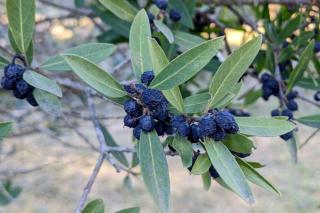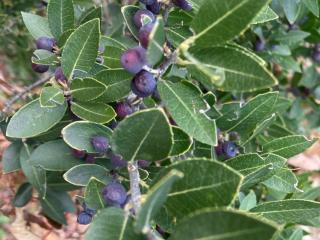

Phillyrea is a new olive-like short shrub. It’s great for growing where winters are cold.
Phillyrea facts, a short list
Name – Phillyrea
Family – Oleaceae
Type – shrub
Height – 16 to 23 feet (5 to 7 meters)
Exposure – full sun to shade
Soil: – ordinary – Foliage: evergreen – Flowering: end of spring, early summer
In fall or spring for potted shrubs.
For plants purchased with their roots bare, plant them in fall soon after buying them.
Follow our advice on planting shrubs
Follow our advice on pruning shrubs.
Don’t prune in spring, wait for the blooming to fade away to reshape your shrub.
 An extremely hardy plant, Phillyrea can cope with all kinds of soil, emplacements and weather patterns. It’s native to the Mediterranean area.
An extremely hardy plant, Phillyrea can cope with all kinds of soil, emplacements and weather patterns. It’s native to the Mediterranean area.
This is the ideal “fill-the-spot” shrub that requires practically no care at all. For those who miss growing an olive tree because their weather is too cold, this is the perfect look-alike!
You can set it up as a standalone, merge it into a shrub bed or create hedges with it, since it is so easy to prune.
 There are several species you can find in garden stores, but it isn’t a very common plant overall. You might find:
There are several species you can find in garden stores, but it isn’t a very common plant overall. You might find:
Read also:
Phillyrea fruits are very small, about a quarter-inch across (6 mm). They’re not particularly edible, but they aren’t toxic, either.